THe Truth Is Rarely Pure And Never Simple -Oscar Wilde
For the past few years, the great debate in the stuffy world of wine has been alcohol. It is a topic that people feel passionately about. It is also one of those rare topics in the discussion of wine that has actual concrete parameters that can be discussed. Thus it is a great thing to base symposiums and discussion groups around.
I for one could care less what the alcohol percentage is of a wine. Either I enjoy it or I don't. But the number is printed on the label and gives ammunition for all with a bone to pick. The most common bone being picked is that high alcohol wines are a stylistic decision made by lazy winemakers. People who dislike high alcohol wines claim it as evidence as an attempt to make big flabby overripe wines to trick some critic into giving out a big numerical score to the wine.
Like I have discussed earlier in this blog, I pick mainly by using my natural senses. I like to look at the chemistry just so I know what I'm getting myself into as far as the ferment goes. But the decision as to is the fruit ready to come off the vine, I trust mainly my sense of taste, touch, and sight while walking the vineyard. (If I am smelling or hearing the grapes on the vine, that is an indication that I should have picked yesterday.)
One of the big reasons I have decided to swing my decision making so far into one camp is due to the fact I make wine in Paso Robles. This is a unique place making unique wines. If there is a textbook out there that explains making wine in Paso, I haven't read it yet. Most accepted thought on winemaking was established elsewhere, thus I always take lessons from afar with a grain of salt. For a case in point, let's look at the 2011 harvest.
Things are all over the map this year. Early ripeners are developing late and vice versa. I picked some Tempranillo last week that was 23.8 Brix and 3.95 pH. Sure that's just the low acid nature of Tempranillo, but even though it will end up being around just 13% alcohol, the fruit was plenty ripe and I didn't want to let it hang another day. Then this weekend we picked some classic Paso Robles fruit.
Our Kate's Vineyard Zinfandel is always one of my favorite picks of the year. The vines are not overly vigorous for Zin, and produce amazingly complex wines. One of the main reasons for the complexity is high acid and tannin in the must even when pushed for ripeness. Here is the brix measurement after a 4 day cold soak.
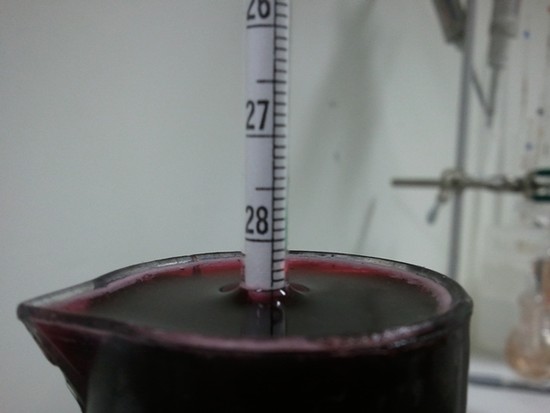
28.5! There I go chasing big scores with my big lazy overripe jammy Zin that is going to taste like some Virgin Islands cocktail. If I was making proper wine, I would be pushing for balance, restraint, nuance, complexity. I would have picked it 3 weeks ago at a respectable 25 brix. Instead I'm just going for power to win over some critic who is never going to taste this wine anyway.
Well before we start jumping to conclusions; let's look at some more evidence. I can't have you virtually taste this, so I can't prove that this wine is going to be incredible. But check out this photo:
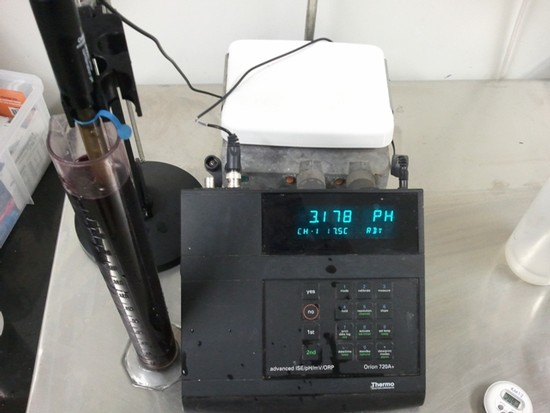
Wait, what? 3.178 pH. My favorite was the sample I took 2 weeks ago that was 26.2 Brix with a 2.84 pH. So there I go, trying to impress the euro snobs with my austere acidic wines that will take years of ageing to be drinkable.
So who am I making this wine for? Well, I'm making it for the people who have tasted our Zin and love it. Sure these numbers are off kilter, but this must tastes right it its own peculiar way. Big and ripe but with amazing backbone, color and tannin to bring everything into proper balance. Our 2007 Zin had very similar chemistry and it sold out in about 3 weeks. If I could get the numbers to be more traditional, but had to sacrifice what this must tastes like, I would never go for that.
Next time someone wants to look at the % number on the wine label and pontificate about the winemaker's intention, tell them this little story. This world is not always so black and white.
As a winery grows, the most pressing concern on the wine making side is how to expand production without loss of quality. The key reason quality can differ as growth takes place is the choice of new vineyards. In that spirit, it has taken 3 years of patience to find another Chardonnay vineyard here in Paso Robles that we felt comfortable with. The 2011 vintage marks our fist attempt to get to know this place. (People commonly claim that the French word Terroir has no translation to English, I disagree. To me it means place, as in "It's almost as if that building is of this place." Writing this blog has reminded me that the English language can be as beautiful as any if used with consideration.)
The only comparison I can find to this type of nervous excitement is a first date. When all possibilities are still available, your dreams framing what could be.
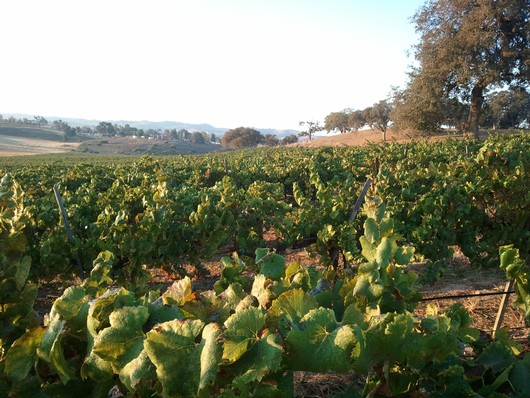
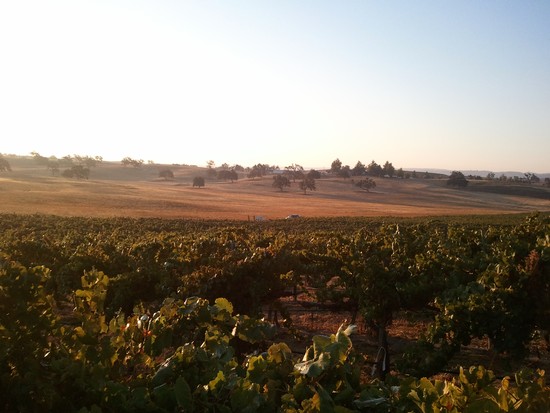
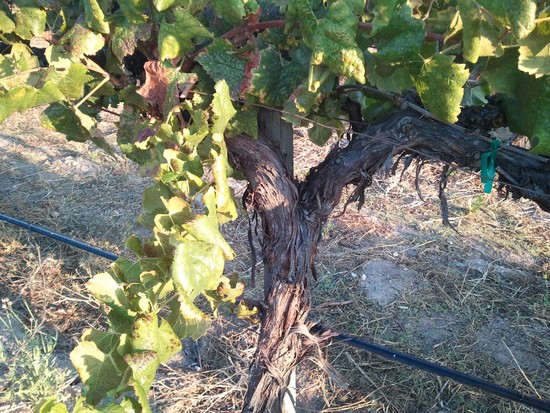
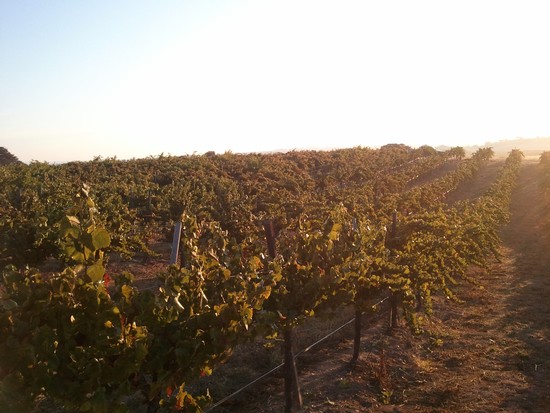
The unpredictable nature of the harvest allows for all sorts of opportunities to the open minded winemaker. The small blocks we farm are tailor made for trying whatever experiment comes to mind during crush. And then, if you let your mind wander, one new idea leads to the next.
This year I wanted to try something a bit different with the Chardonnay. For the most part, every year we harvest the Chardonnay and the clusters are added directly to the press. The juice is pressed from the skins and the wine made from fermenting the juice with no infulence from the skins. I've tasted a few "skin contact" white wines recently and was intrigued. A "Skin contact" white is making white wine exactly like you make red wine, fermenting on the skins as opposed to just the juice. I'm not exactly sold on the concept as I feel the goals of making white and red wines are not necessarily the same, so techniques should not be the same. Never the less, I encourage you to go find these wines. Sometimes they are refereed to as "orange wines" due to the slight coloring the occur. Another way to find them is to look for "skin contact" or "on skins" in the production notes. It is always interesting to taste something that is done in a different way, a great example for tasting what skins add to the wine.
What I was interested in about fermenting white wine on the skins was not the skins, but the potential for carbonic maceration. I seldom "crush" berries during harvest. That is, use some mechanical device to crack the grape skins and release the juice. I use a lot of whole berry fermentation. Leaving the berry whole encourages a slightly different form of enzymatic fermentation within the grape itself. This type of fermentation is known to produce a more pronounced fruit character in the finished wine. Those of you who have tasted Paso Robles wines know that they tend to be big in all aspects. Using this technique to increase the fruit character allows the finished wine to remain balanced, not clunky or harsh due to the acid or tannins dominating.
In this spirit, a section of our estate chardonnay was destemmed after harvest, and the whole berries allowed to rest in our cold room under a blanket of CO2. After 48 hours, the grapes were pressed and the the juice treated the same as our whole bunch pressed Chardonnay. We'll see some time in spring how the flavors differ from the methodology.
A bonus feature of this method is that we ended up with a bin of chardonnay skins. This allowed for the next little experiment. Some of these skins were tossed into one of the Pinot Noir ferments that was just getting started.
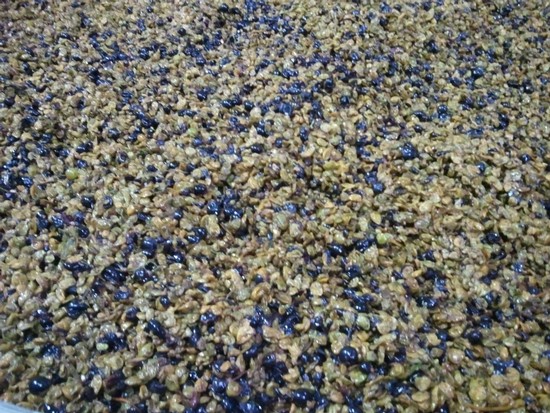 It has been rather common to add Viognier skins into Syrah ferments, adding delicate mid-palate flavors to the heavy Syrah. Pinot Noir is a much more delicate varietal, so it will be interesting to see what the Chardonnay skins add to the flavor. Now, if I had a 20+ ton tank of Pinot Noir fermenting away, it would be rather insane to just chuck in the Chard skins and see what happens, because there is no guarantee that this will work. It might be beautiful, it might be horrible. When you have several 1.5 tons ferments going on, the risk is not that great. The small size of our ferments allows for this exploration without risking the farm. So, we'll see what happens. I'll keep you posted on any other ideas that pop up over the next couple months.
It has been rather common to add Viognier skins into Syrah ferments, adding delicate mid-palate flavors to the heavy Syrah. Pinot Noir is a much more delicate varietal, so it will be interesting to see what the Chardonnay skins add to the flavor. Now, if I had a 20+ ton tank of Pinot Noir fermenting away, it would be rather insane to just chuck in the Chard skins and see what happens, because there is no guarantee that this will work. It might be beautiful, it might be horrible. When you have several 1.5 tons ferments going on, the risk is not that great. The small size of our ferments allows for this exploration without risking the farm. So, we'll see what happens. I'll keep you posted on any other ideas that pop up over the next couple months.